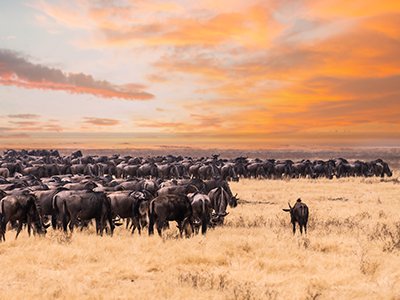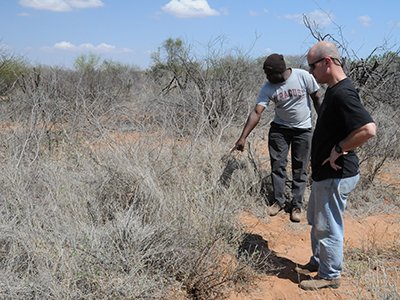Human Activity Disrupting Iconic African Ecosystem, Biologist Finds
Professor Mark Ritchie notes up to 75-percent drop in larger wildlife species populations in parts of Serengeti-Mara ecosystem

A researcher in the College of Arts and Sciences (A&S) has confirmed that Africa’s Serengeti-Mara ecosystem—one of the largest, most protected on Earth—may be imperiled, due to increased human activity at its border.
Biology Professor Mark Ritchie is part of an international study monitoring human activity, wildlife populations, vegetation and soils in and around the iconic ecosystem, which covers more than 40,000 square miles and includes the Serengeti National Park in northern Tanzania and the Maasai Mara National Reserve in East Africa.
Drawing on more than 40 years of data from the area, he and the team have observed a 400-percent spike in the human population in some areas and up to a 75-percent drop in larger wildlife species populations, particularly on the Kenyan side.
Their findings are the subject of an article in the journal Science (American Association for the Advancement of Science, 2019).

“The human toll on plants, animals and soils near the borders is large,” says co-author Ritchie, who specializes in biodiversity and environmental science in A&S. “Human agriculture and livestock-keeping is squeezing the wildlife into the core [protected areas] by damaging habitat outside the protected areas and disrupting the migration routes of wildebeest, zebra and gazelle.”
Every year, approximately a million wildebeest, half a million gazelle and 200,000 zebra make the perilous trek from the Serengeti park to the Maasai Mara reserve in Kenya in search of water and grazing land.
Research shows that the shift in land-use by wildlife has produced detrimental changes in vegetation and soils deep inside protected borders, and could make the ecosystem less resilient to future shocks, such as drought or further climate change.
“Keeping people out of an area to protect biodiversity is not enough. We need to integrate human activities and conservation outside the reserves, as well,” says Ritchie, stressing the interdependence of land both inside and outside the protected areas.
He maintains that even for reasonably well-patrolled reserves, such as the Serengeti and Mara, alternative strategies are needed to sustain the coexistence of local people and wildlife in the surrounding landscapes.
The current strategy seems to produce a “human fence” of increasingly hard boundaries, which poses a major risk to people and wildlife, Ritchie adds.
“This study highlights the importance of long-term data to understanding environmental change,” said Matt Kane, a program director at the National Science Foundation, which helps fund the research. “Insights gained from these studies reveal that human expansion along the boundaries of protected conservation areas are still impacting wildlife, with cascading effects on plants and soil-microbes. This, in turn, results in a less resilient environment with potentially negative consequences for the increasing local human population.”
